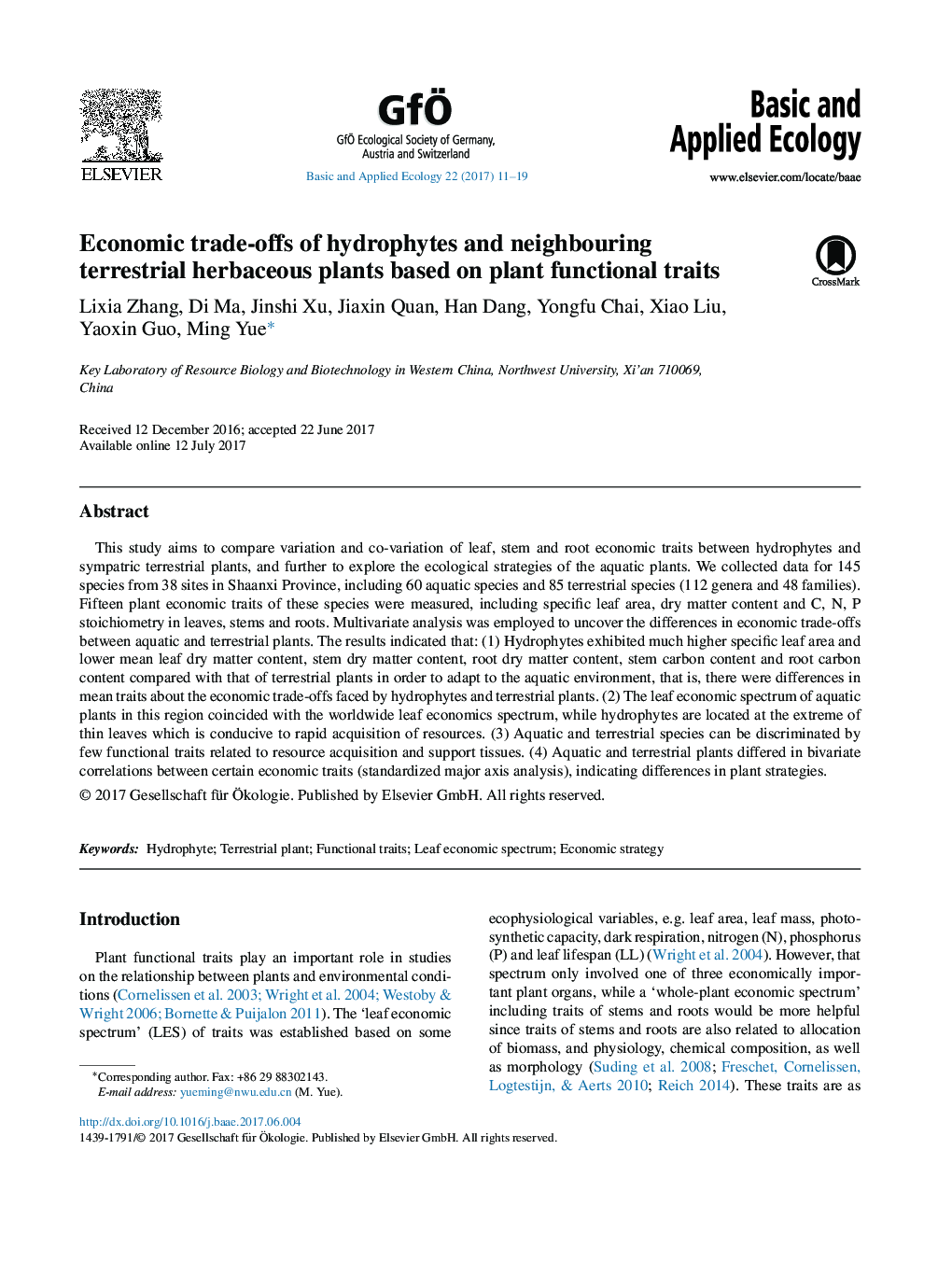| Article ID | Journal | Published Year | Pages | File Type |
|---|---|---|---|---|
| 5742810 | Basic and Applied Ecology | 2017 | 9 Pages |
This study aims to compare variation and co-variation of leaf, stem and root economic traits between hydrophytes and sympatric terrestrial plants, and further to explore the ecological strategies of the aquatic plants. We collected data for 145 species from 38 sites in Shaanxi Province, including 60 aquatic species and 85 terrestrial species (112 genera and 48 families). Fifteen plant economic traits of these species were measured, including specific leaf area, dry matter content and C, N, P stoichiometry in leaves, stems and roots. Multivariate analysis was employed to uncover the differences in economic trade-offs between aquatic and terrestrial plants. The results indicated that: (1) Hydrophytes exhibited much higher specific leaf area and lower mean leaf dry matter content, stem dry matter content, root dry matter content, stem carbon content and root carbon content compared with that of terrestrial plants in order to adapt to the aquatic environment, that is, there were differences in mean traits about the economic trade-offs faced by hydrophytes and terrestrial plants. (2) The leaf economic spectrum of aquatic plants in this region coincided with the worldwide leaf economics spectrum, while hydrophytes are located at the extreme of thin leaves which is conducive to rapid acquisition of resources. (3) Aquatic and terrestrial species can be discriminated by few functional traits related to resource acquisition and support tissues. (4) Aquatic and terrestrial plants differed in bivariate correlations between certain economic traits (standardized major axis analysis), indicating differences in plant strategies.
